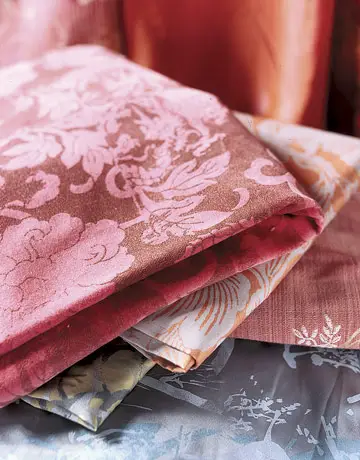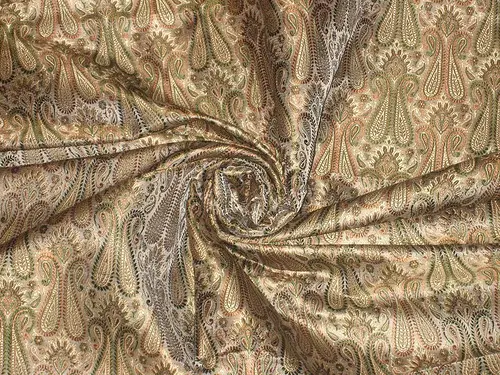The thought of the Victorian period reminds us of the rich, fashionable clothes worn by the men and women of this time. The Victorian period is the time when numerous changes took place in the lifestyle, clothing and other important factors governing the lives of these people. However, the fabric used during this time is no longer used today primarily because it is very expensive to manufacture.

Silk
In the late 1600s, the English Textile Industry started producing cheaper silks in Britain. The fabric used by the rich and the aristocratic classes was silk. The usage of silk or even satin would indicate the wealth that family had and was thus regarded as a status symbol.
The poorer families, however, wore simple clothes made from cheap fabric like cotton, linen, wool and were easily accessible around their houses. Thus, fabric dictated the status of a person in the society.
Crepe
Another fabric used in the Victorian era was Crepe. Crepe is a crinkled surface of the light weight fabric. This fabric would be used to make widow’s dress with a plain collar and broad weeper’s cuffs made of white muslin and crepe bonnet with a veil.

Crepe was a fabric that was associated with mourning and is like silk. Dresses that were made from Henrietta and Melrose were trimmed with crepe. Henrietta cloth was a twilled fabric with a silk warp. Melrose was linen named after the town in Scotland it came from.
Bombazine
Bombazine was a fabric made from the mixture of silk and wool. This kind of fabric was normally used by the poor section of the society in the beginning of the Victorian period. There are references to women dyeing their black dresses when they were in full mourning. Collars, caps and cuffs were also made from the lawn.
Lawn
The word Lawn is derived from the word Laon which is a town in France. The fabric is linen and is used for making garments worn by clergy. The less wealthy people made caps and collars from muslin. Cambric was used to make mourning handkerchiefs. It is a plain, soft linen fabric at times was woven in cotton.
Silk and Stuft was generally used for making petticoats. For making stockings, cashmere, silk or balbriggan was used. Balbriggan was also used for undergarments as it was lightweight and elastic which was perfectly suitable for the purpose.
Victorian fabric colours
Fabric and colours used by men
Men wore sober coloured clothes like the darkish blues, light fawns and plaids for trousers in the 1850s and early 1860s. 1870S was a range of grey and black and broadcloth was the favourite fabric. A necktie would have a colour for a change. Sometimes, silk was used in a ribbed form for waistcoats, and for linings and some facings. 1890s saw fabrics like linen, duck, pongee or seersucker in lighter fawns being used, beige or white for summer wear, and white flannels and brightly coloured wool blazers for sport. However, dark grey or black in woolen cloth were preferred in town and formal wear.
Fabric and colours used by women
On the other hand, the range of fabrics and colours widened for women. It is useful to know that the pure silks, cottons and woollens were different from those of today, which regularly have synthetic threads or crease-resistant agents added.
Taffeta was suitable for bouffant styles because of its beautifully crisp, light quality. Satin and silk or cotton, was almost firm enough to stand on its own, unlike many of the soft satins today.
The Victorian period was about light colours for evening wear and which were considered more suitable for young ladies as well as cottons like muslin or taFlatan. 1860s cotton made way for a high-fashion fabric, and silk, satin, taffeta, faille, moiré, silk poplin from Ireland, and velvet for more mature ladies were used for formal dresses.
Earlier vegetable dyes were used to produce softer colours, both pale and dark. New aniline dyes – strident magenta, electric blue or vivid yellow came in during the 1870s-80s. Softer, more muted colours also appeared in the fine soft woollens such as delaine, a cloth resembling cashmere but with a silk warp or weft, and in the more mannish serge or tweeds used for tailored suits and dresses.